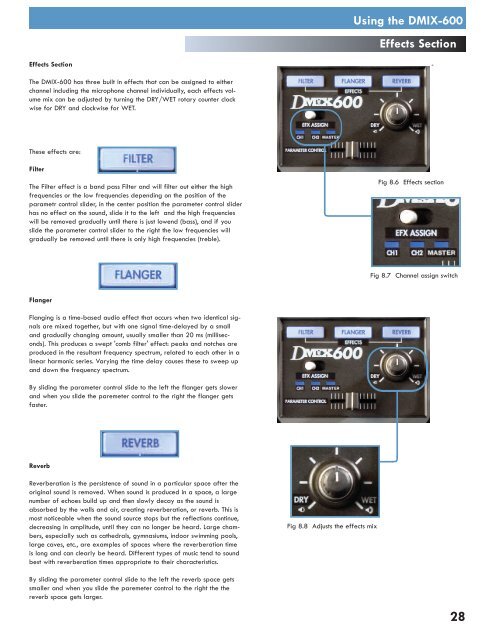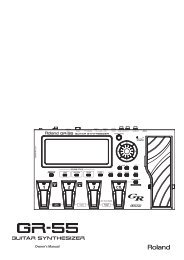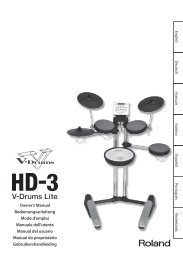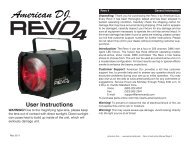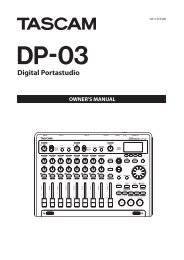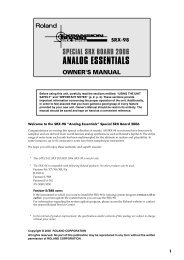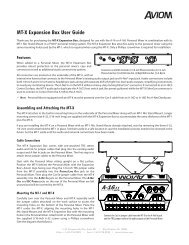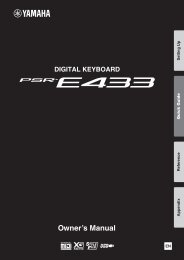Utilisation du dMIX-600 - UniqueSquared.com
Utilisation du dMIX-600 - UniqueSquared.com
Utilisation du dMIX-600 - UniqueSquared.com
Create successful ePaper yourself
Turn your PDF publications into a flip-book with our unique Google optimized e-Paper software.
Using the DMIX-<strong>600</strong><br />
Effects Section<br />
Effects Section<br />
-<br />
The DMIX-<strong>600</strong> has three built in effects that can be assigned to either<br />
channel including the microphone channel indivi<strong>du</strong>ally, each effects volume<br />
mix can be adjusted by turning the DRY/WET rotary counter clock<br />
wise for DRY and clockwise for WET.<br />
These effects are:<br />
Filter<br />
The Filter effect is a band pass Filter and will filter out either the high<br />
frequencies or the low frequencies depending on the position of the<br />
parametr control slider, in the center position the parameter control slider<br />
has no effect on the sound, slide it to the left and the high frequencies<br />
will be removed gra<strong>du</strong>ally until there is just lowend (bass), and if you<br />
slide the parameter control slider to the right the low frequencies will<br />
gra<strong>du</strong>ally be removed until there is only high frequencies (treble).<br />
Fig 8.6 Effects section<br />
Fig 8.7 Channel assign switch<br />
Flanger<br />
Flanging is a time-based audio effect that occurs when two identical signals<br />
are mixed together, but with one signal time-delayed by a small<br />
and gra<strong>du</strong>ally changing amount, usually smaller than 20 ms (milliseconds).<br />
This pro<strong>du</strong>ces a swept '<strong>com</strong>b filter' effect: peaks and notches are<br />
pro<strong>du</strong>ced in the resultant frequency spectrum, related to each other in a<br />
linear harmonic series. Varying the time delay causes these to sweep up<br />
and down the frequency spectrum.<br />
By sliding the parameter control slide to the left the flanger gets slower<br />
and when you slide the paremeter control to the right the flanger gets<br />
faster.<br />
Reverb<br />
Reverberation is the persistence of sound in a particular space after the<br />
original sound is removed. When sound is pro<strong>du</strong>ced in a space, a large<br />
number of echoes build up and then slowly decay as the sound is<br />
absorbed by the walls and air, creating reverberation, or reverb. This is<br />
most noticeable when the sound source stops but the reflections continue,<br />
decreasing in amplitude, until they can no longer be heard. Large chambers,<br />
especially such as cathedrals, gymnasiums, indoor swimming pools,<br />
large caves, etc., are examples of spaces where the reverberation time<br />
is long and can clearly be heard. Different types of music tend to sound<br />
best with reverberation times appropriate to their characteristics.<br />
Fig 8.8 Adjusts the effects mix<br />
By sliding the parameter control slide to the left the reverb space gets<br />
smaller and when you slide the paremeter control to the right the the<br />
reverb space gets larger.<br />
28


